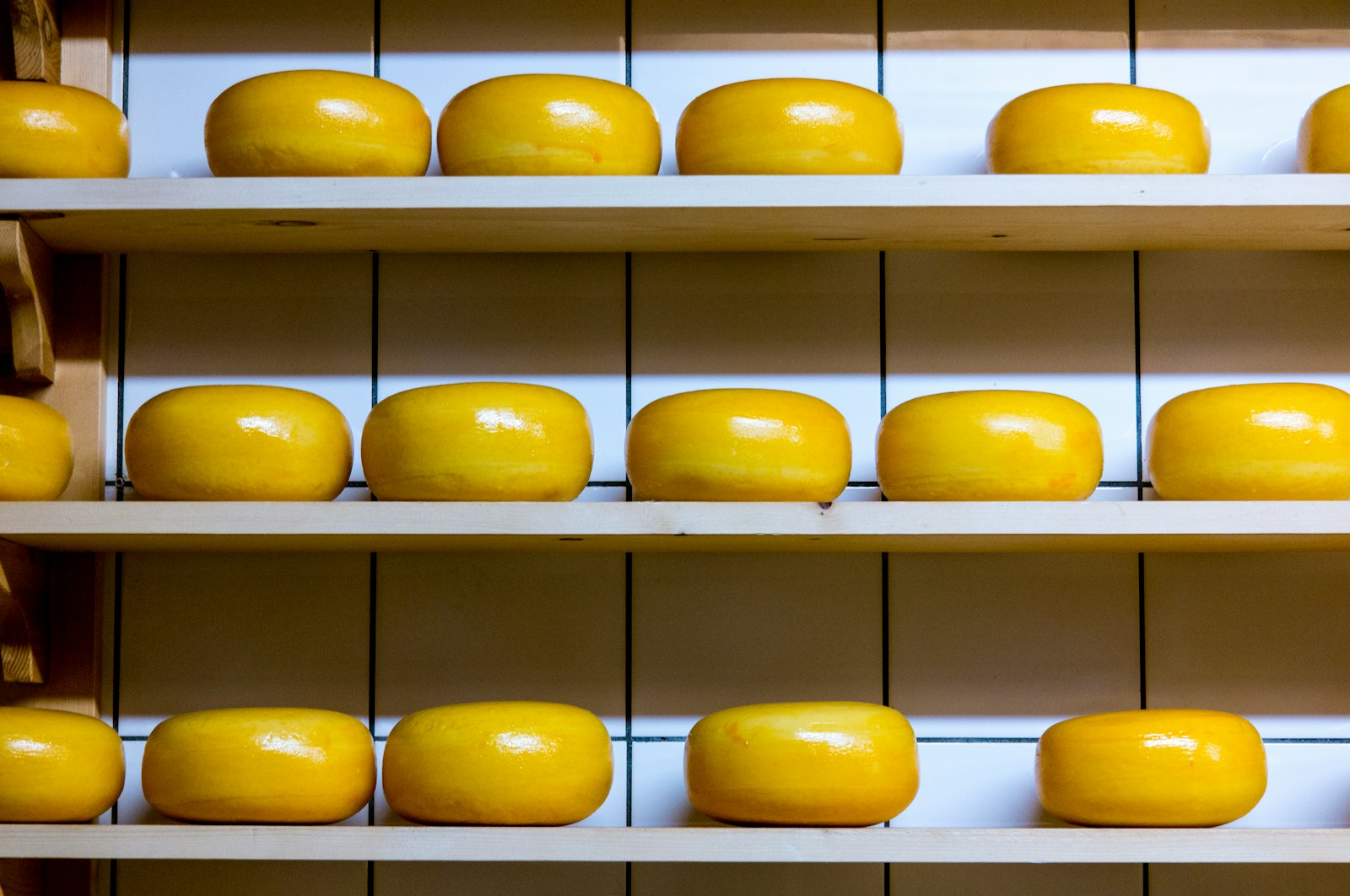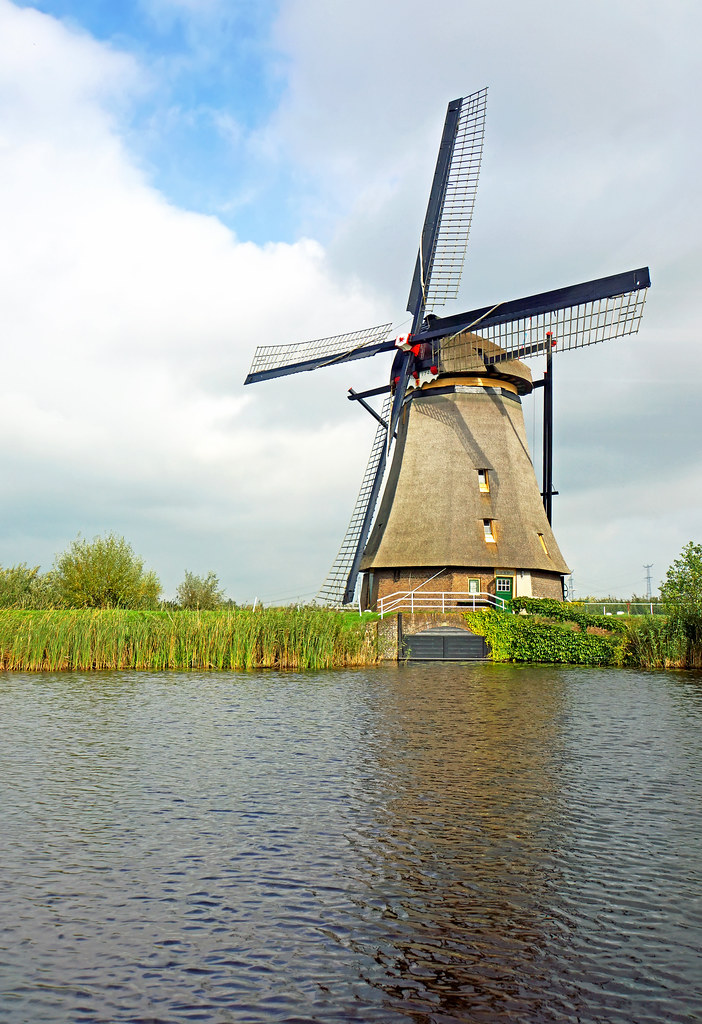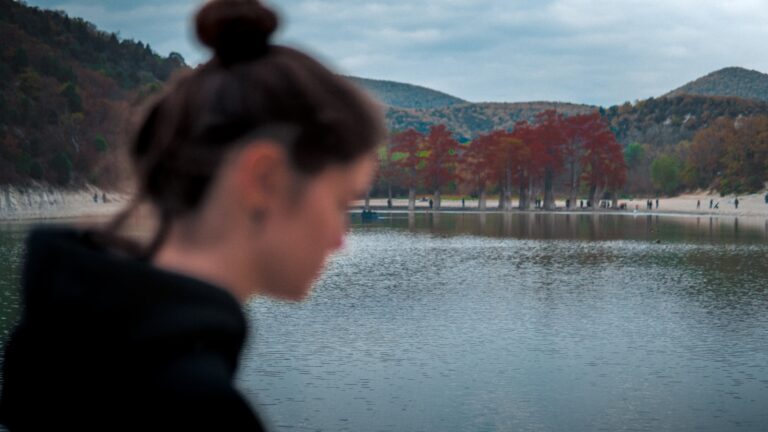SELL EXPENSIVE, BUY CHEAP
Besides wooden clogs, Gouda cheese is a specialty that tourists often buy when visiting the village of Zaanse Schans, near Amsterdam. The Gouda cheese brand appeared in the 17th century in the Netherlands. Each wheel of this type of cheese weighs from… four kilograms to 20 kilograms!
Gouda has many flavors: mint, garlic, creamy, or caraway… Young cheese is six months old; aged cheese must be at least 18 months old – coated with black wax to preserve it longer.

Like other Europeans, the Dutch eat cheese with bread. Or enjoy it with wine. Today, the Netherlands is the largest cheese exporter in the world, with hundreds of different varieties.
In fact, according to the tour guide, buying goods in the village of Zaanse Schans is very expensive, possibly three times more than buying them on the street. However, he skillfully added that while the goods here might be expensive, they are unique; in Amsterdam, even with money, you might not be able to buy them!
Finally, everyone in the tour group bought a few items; some even bought several large bags. My husband and I only bought a small amount of cheese cut from a four-kilogram block, enough for our days in the Netherlands, and a few small wooden clogs to bring home as souvenirs.
But usually, when tourists come here, their purpose is to see the windmills, which can already be seen on the way from Amsterdam to the village.
Built 3-4 centuries ago, each Dutch windmill has different architecture, size, and interior. Through ups and downs and fierce “naval battles,” many of them have been damaged.
It is important to know that a quarter of the Netherlands’ area – nearly 42,000 square kilometers – lies below sea level; in some places, it is even seven meters lower. So the people here almost always have to engage in “water battles”; even today. Windmills were one of the formidable weapons they used in those battles.
In 1959, in order to preserve the architectural and cultural values of the Zaantad river region, the Dutch government reconstructed a village with windmills. And Zaanse Schans was chosen. It’s all just a setup and a performance, but it still creates a picturesque countryside that is hard to miss in Europe.
But thanks to that, before the Covid-19 pandemic, Zaanse Schans village welcomed nearly two million visitors each year, according to statistics from the Dutch tourism industry; becoming one of the top destinations in Europe.
I heard that in the 17th century, this area had more than 600 windmills. However, with the ravages of time and the events like wars, now only eight have been somewhat restored. They are not the same. It’s understandable: different owners, different opinions!
Also from the 17th century, windmills gradually became an indispensable tool in the daily lives of the Dutch. They also contributed to the industrial development of the Netherlands. Thanks to the wind from the sea, the windmills can spin year-round, pumping, sucking water, grinding wheat, sawing wood, and even crushing stone.
The prosperous era of windmills ended with the advent of the steam engine. After that, they gradually disappeared, until the Dutch government began to take an interest in preserving and restoring them.
From 1959 to 1974, some of the still-functioning windmills were relocated from the villages surrounding Zaanse Schans. A laborious task. Some of them had to be dismantled brick by brick; the remaining parts were lifted onto trucks with a large crane and transported to Zaanse Schans.
Below is a list of the windmills in the village of Zaanse Schans, which, in fact, are like small factories that are still operational.
– The Houseman – De Huisman – A factory producing condiments like mustard;
– The Crowned Poelenburg – De Gekroonde Poelenburg – Saw mill;
– The Cat – De Kat – Dyeing factory;
– The Young Sheep – Het Jonge Schaap – Sawmill; The Ox – De Os – Oil mill;
– The Seeker – De Zoeker – Cooking oil factory;
– The Spotted Hen – De Bonte Hen – Saw mill; The Shamrock Leaf – Het Klaverblad – Saw mill.
Among the windmills mentioned, only three are open to visitors: The Crowned Poelenburg; The Cat; and The Seeker. Of course, to enter, you have to buy a ticket; just like with the old houses in Hoi An.
After viewing the windmills and “taking selfies” with them as the backdrop, you should also visit the windmill museum to learn more.
At the museum, they will introduce the history and function of the windmill. Tourists can also see historical artifacts that showcase the life, daily activities, and culture of the people in the Dutch countryside many centuries ago.
Of course, even when the windmills are all operational, the purpose is to create a tourist product. My spouse and I entered a windmill, which was the second one on our way, right after the spice mill windmill.
Entering a windmill, of course, you visit the ground floor first. There, they will show a short film explaining what is produced at this windmill. Next, visitors can climb the stairs – quite steep! From there, one can gaze at the beautiful surroundings as well as watch the blades of the windmill spinning.
And perhaps you can even catch a glimpse of the peaceful life of the farmers in this area from long ago.
I heard that in the past, when there was good news, the owner of the windmill would tilt the top blade to the right; when there was bad news, he would tilt it to the left.
After watching the movie about the windmill, seeing how it works and climbing on it, it further increased our understanding of windmills. So interesting!




